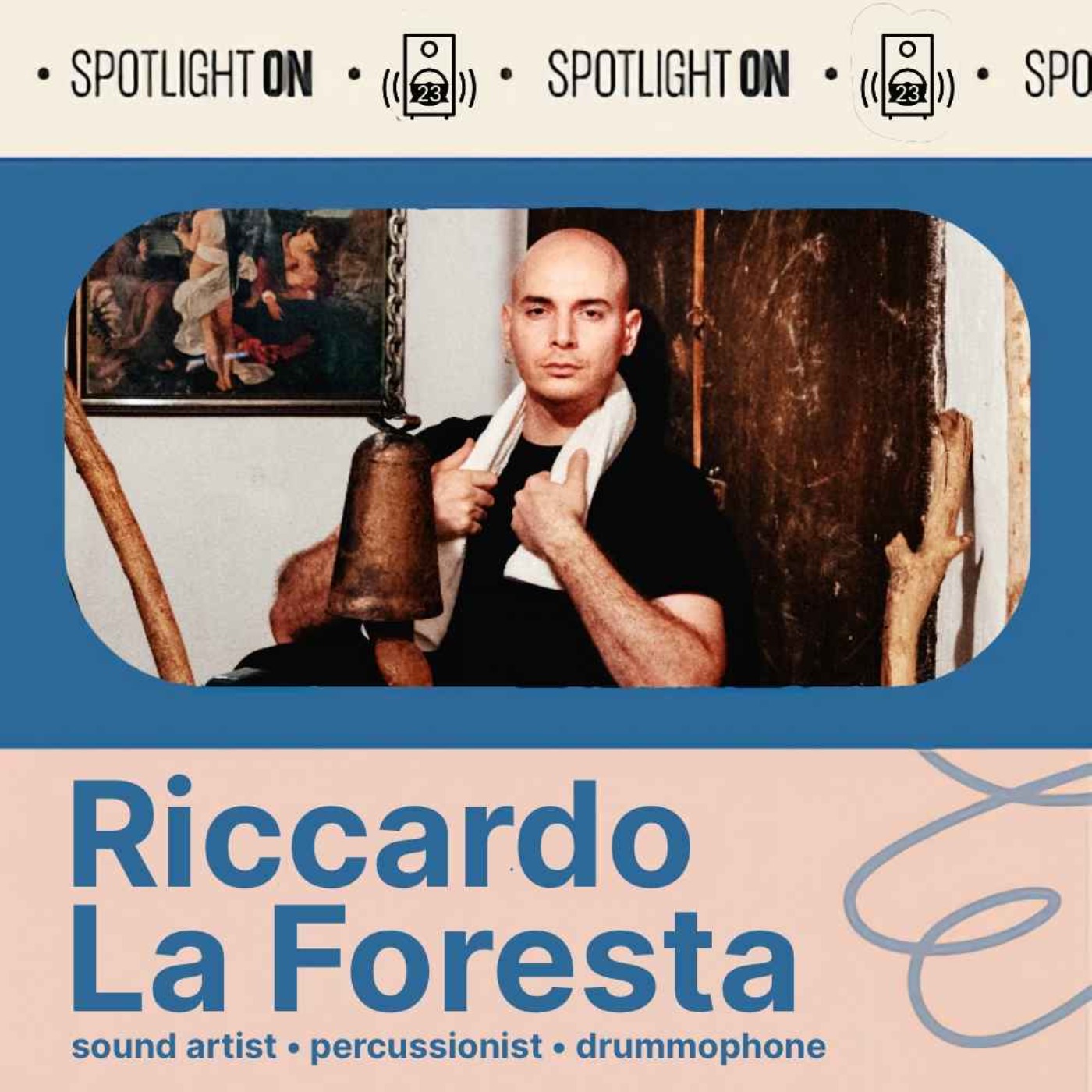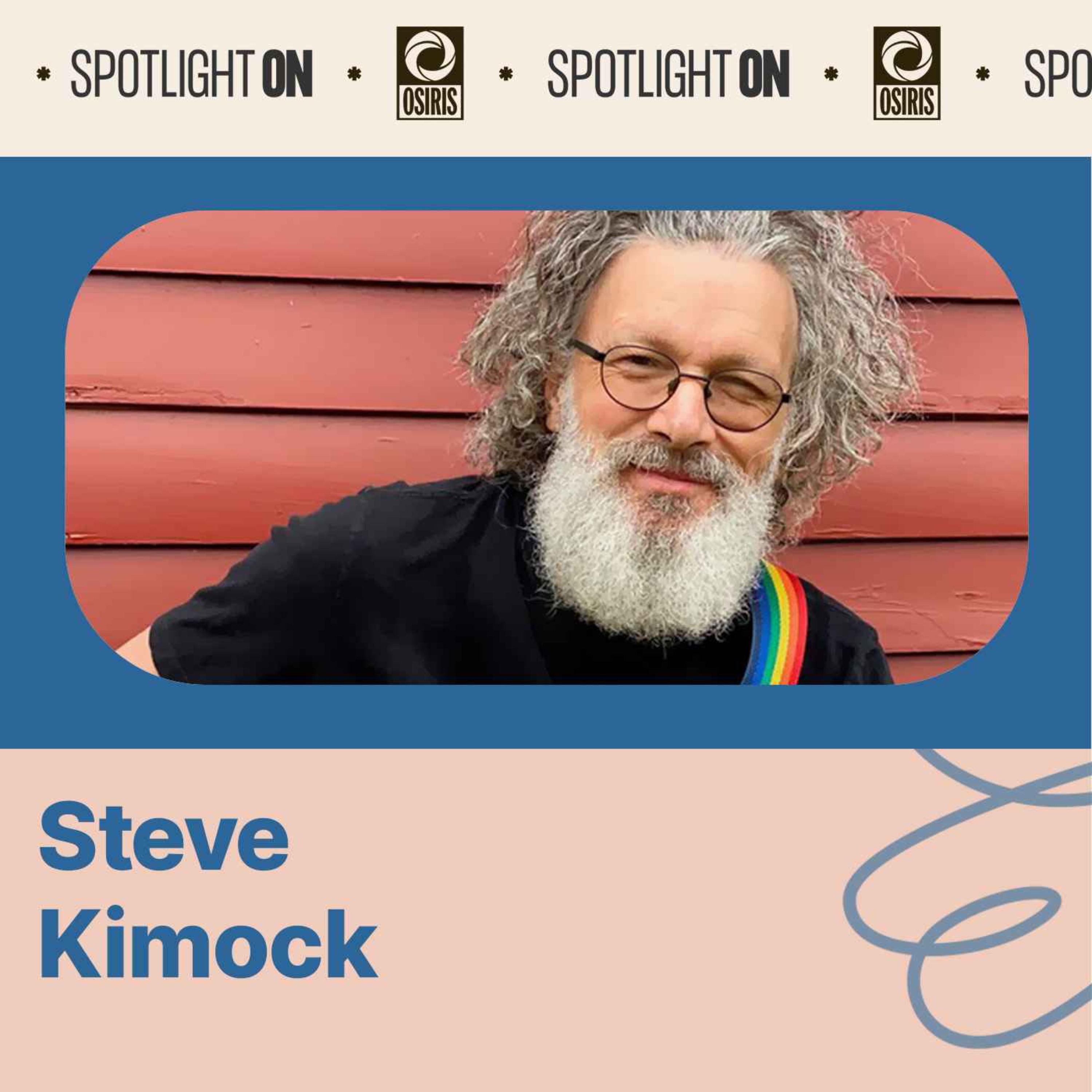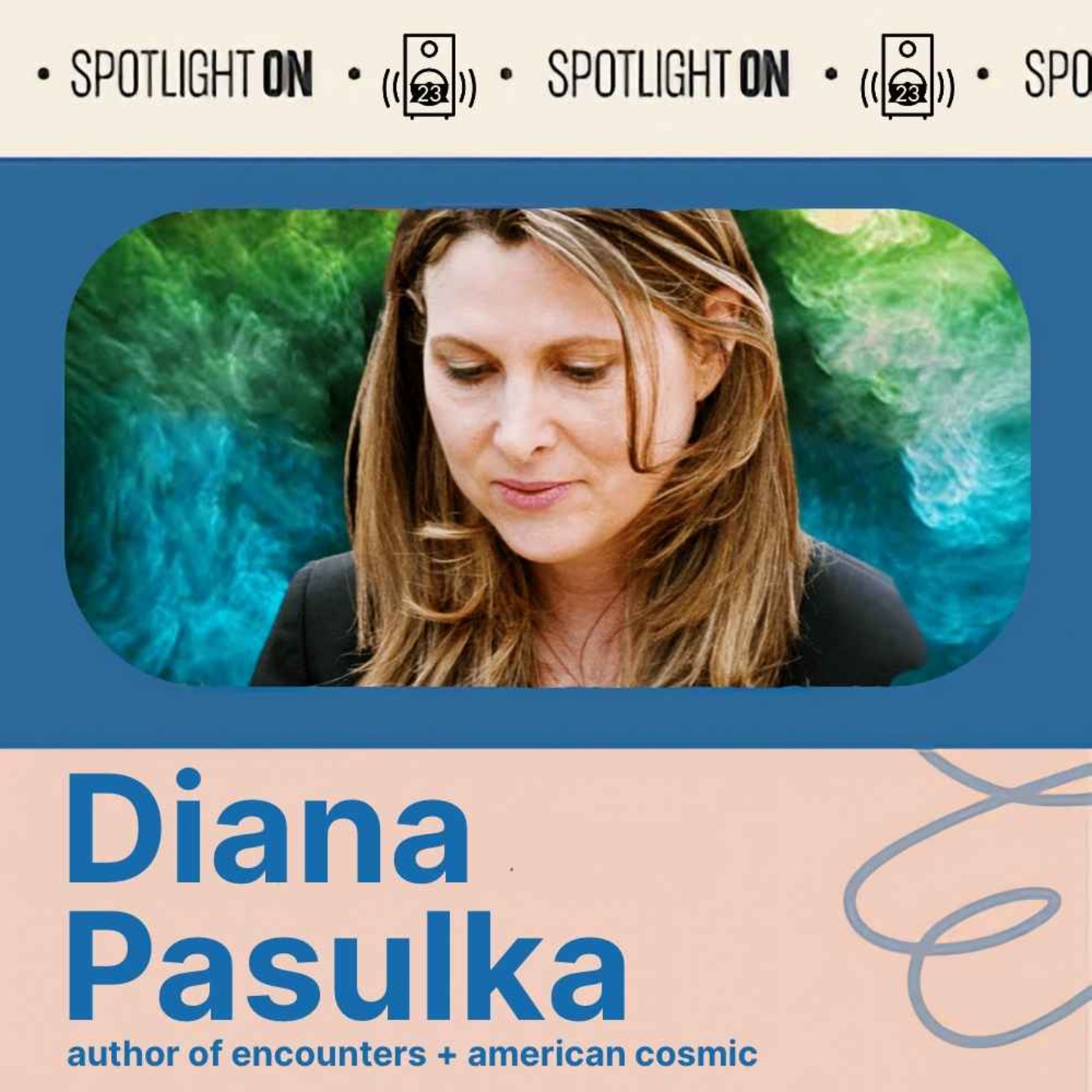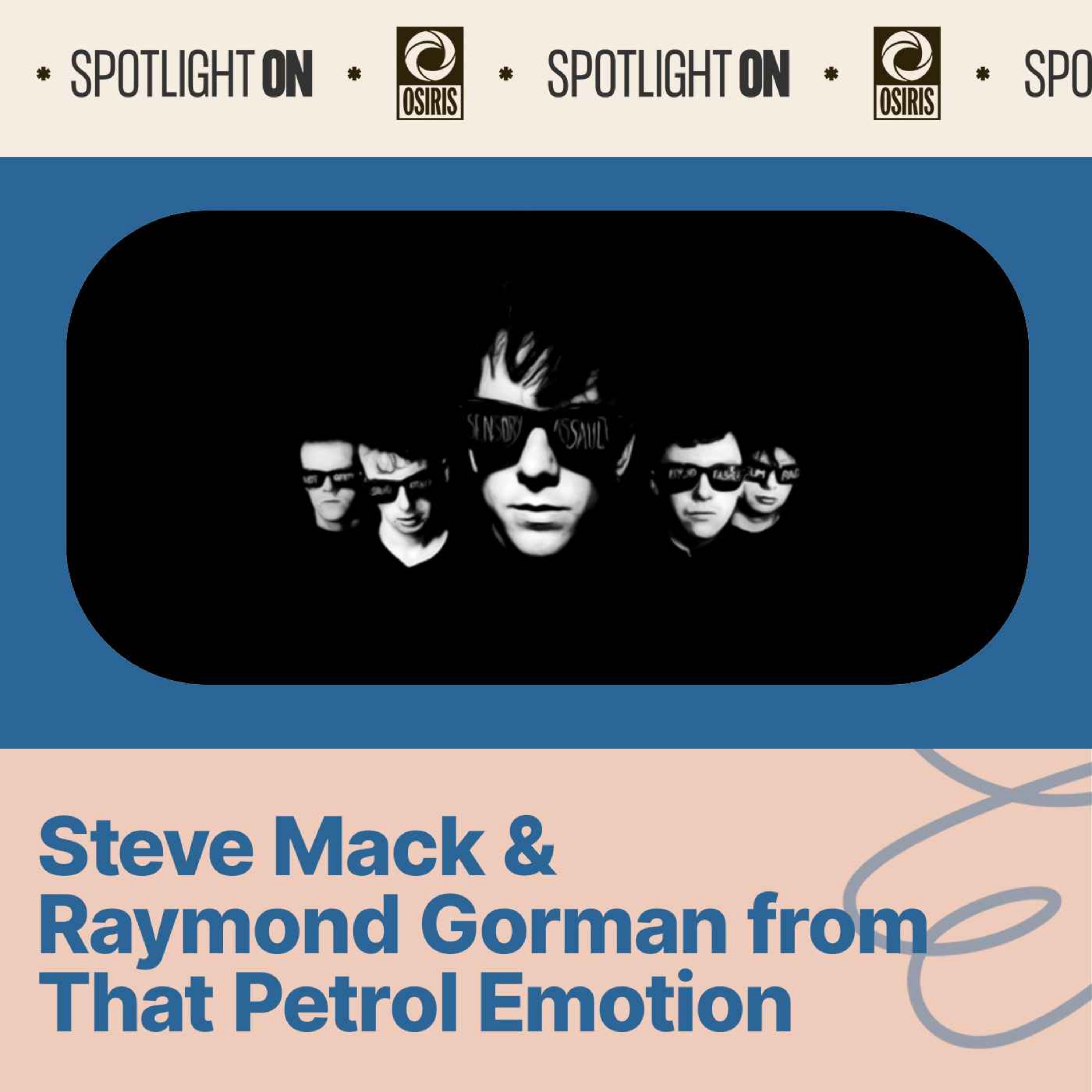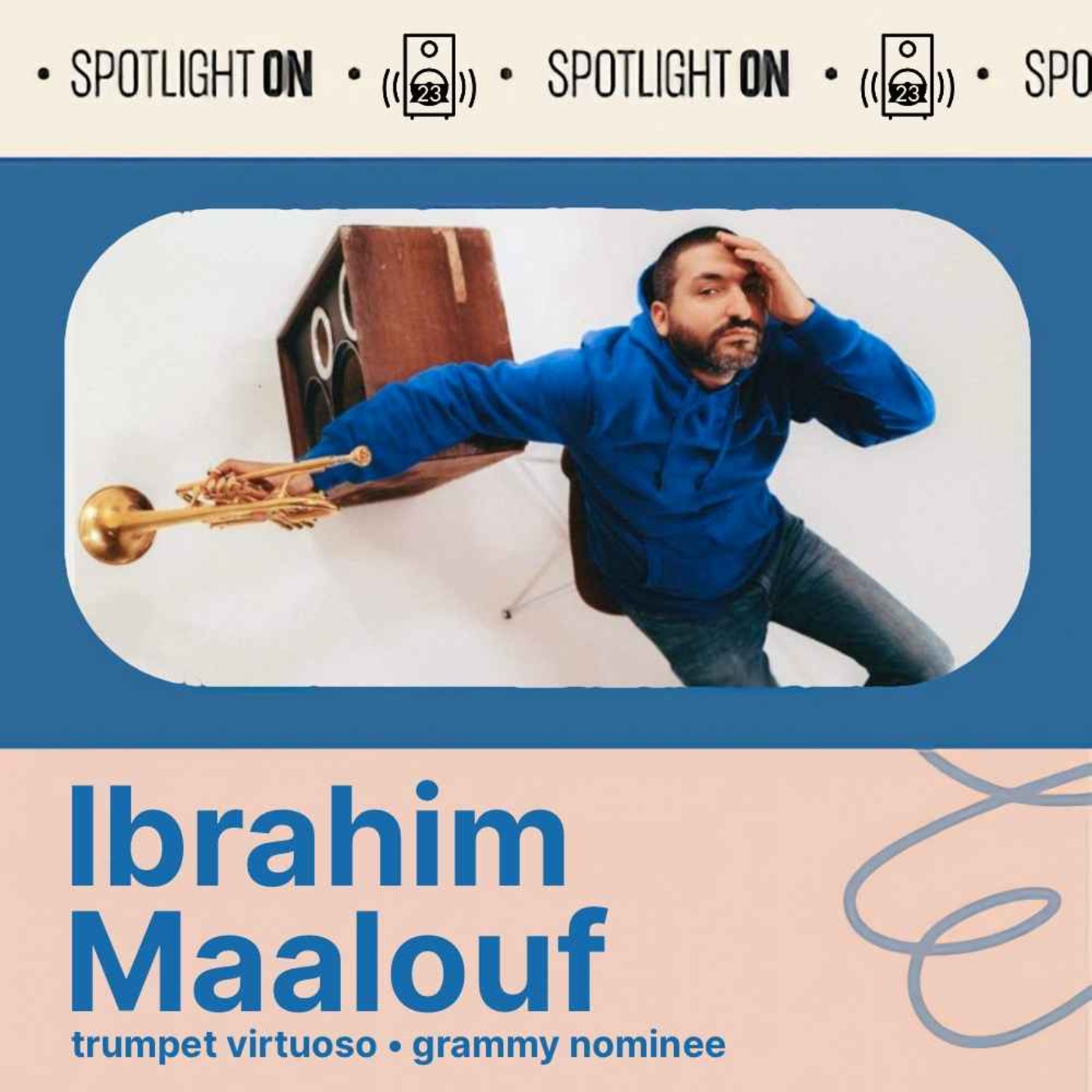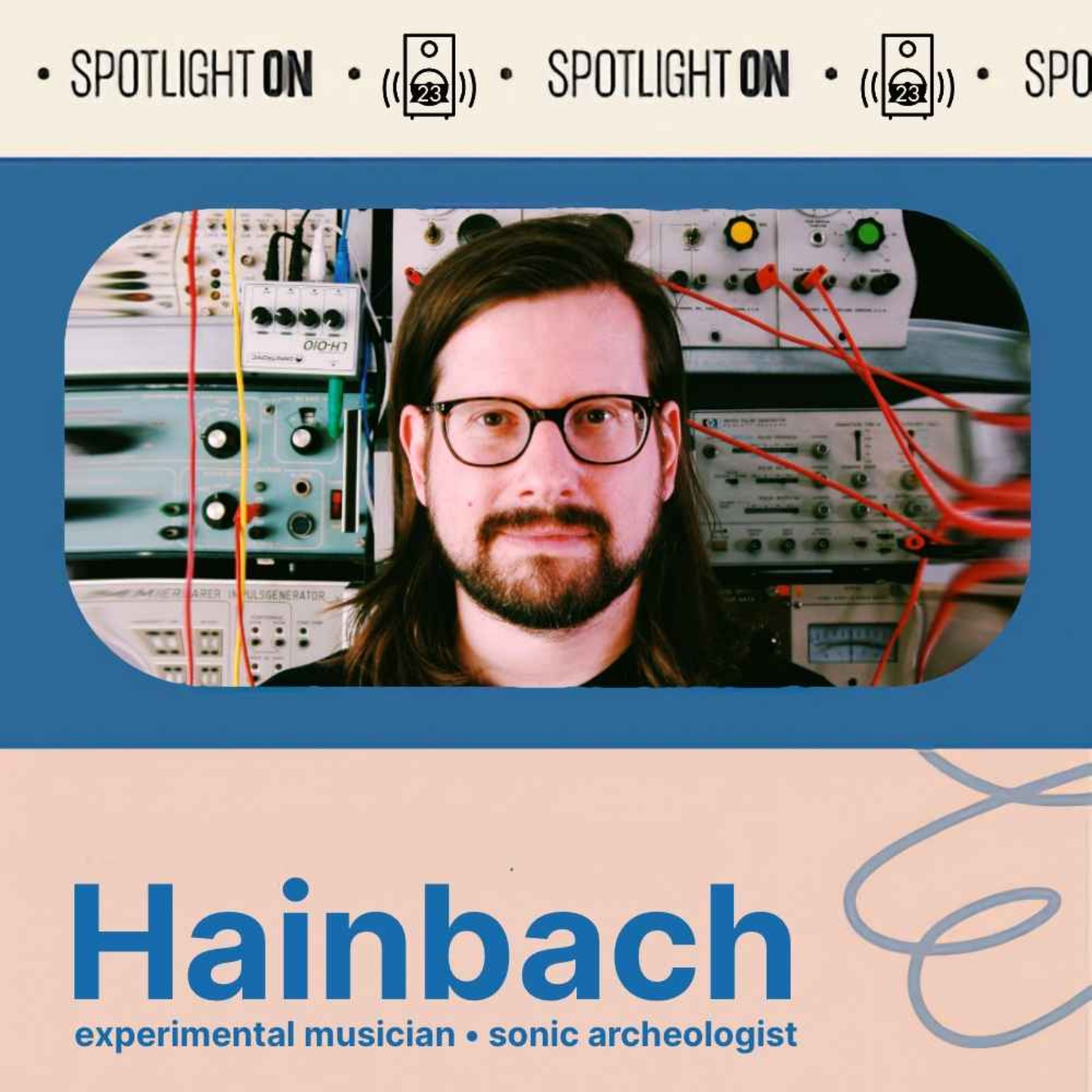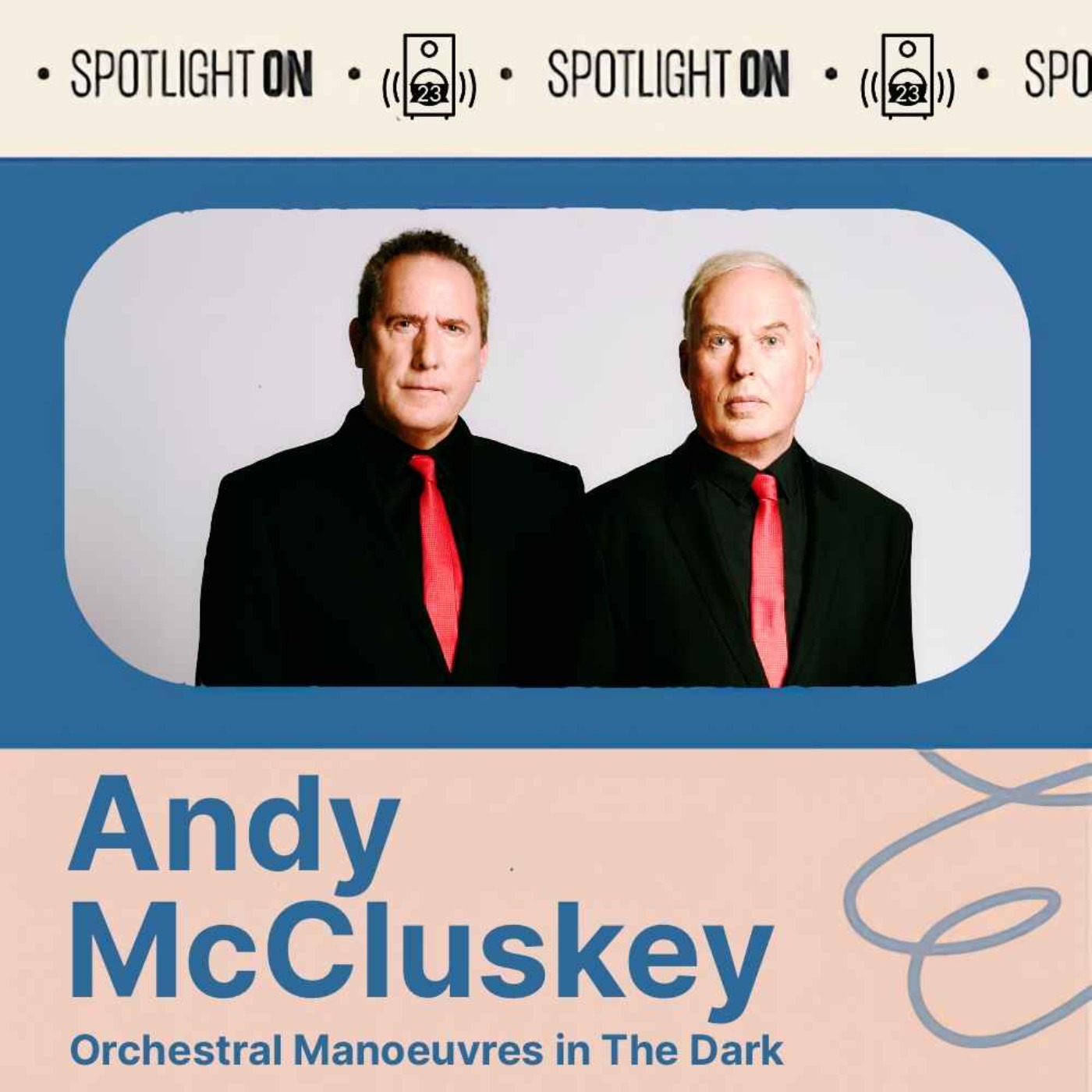Riccardo La Foresta: drumming without drumming
The Italian sound artist & percussionist details the origin and methodology of the Drummophone and the process behind his sonic collaboration with emptyset's James Ginzburg.
Today, the Spotlight shines On Modena, Italy-based sound artist and percussionist Riccardo La Foresta.
Riccardo has spent the last several years exploring the Drummophone—an array of bass drums that create sound by being confronted with compressed air and which, in turn, produce complex acoustic drones. By combining the Drummophone with other electro-acoustic devices and changes in the air pressure in the room where it is set up, a generative system results, one that can create endless possibilities in sound.
In this engaging conversation, we discussed Riccardo’s musical journey, his experimentation in percussion, and his exploration of new techniques and approaches to drumming. We also got into the evolution of drums and percussion instruments, the influence of acoustics on composition, and the potential for drumming education in conservatory settings.
(The musical excerpts heard in the interview are from Riccardo La Foresta & James Ginzburg’s album Six and Forty-Six)
–
Dig Deeper
• Visit Riccardo La Foresta at riccardolaforesta.com
• Purchase Riccardo La Foresta & James Ginzburg’s Six and Forty-Six on Qobuz or Bandcamp, and listen on your streaming platform of choice
• Follow Riccardo La Foresta on Instagram and YouTube
• Riccardo La Foresta: playing drums without playing (video)
• Drummophone’s Manifesto
• The Experimental Underbelly of Italian Electronic Music
• Festival: NODE, digital art & music festival in Modena
• Brad Wilk | Drummer, Rage Against The Machine
• Flight of the Bumblebee on percussion (DoubleBeats)
• La Monte Young: ‘I’m only interested in putting out masterpieces’
• Does the world need another drum solo?
• Sonica Festival
• emptyset + James Ginzburg
• Riccardo La Foresta: ‘Curating has taught me how to share’
–
• Did you enjoy this episode? Please share it with a friend! You can also rate Spotlight On ⭐️⭐️⭐️⭐️⭐️ and leave a review on Apple Podcasts.
• Subscribe! Be the first to check out each new episode of Spotlight On in your podcast app of choice.
• Looking for more? Visit spotlightonpodcast.com for bonus content, web-only interviews + features, and the Spotlight On email newsletter. You can also follow us on Instagram, Facebook, and Mastodon.
Hosted on Acast. See acast.com/privacy for more information.
(This transcript has been lightly edited for clarity.)
LP: I'm excited to talk with you. I've spent the last few hours listening to the new album and, more importantly, watching a bunch of performance videos on YouTube because I was fascinated by what your live presentation looks like. Hopefully, we'll get into that a little later, but as we start, could you talk to me about your earlier history with music?
Did you grow up a musician? Were you a percussionist? I'd love to get that context before discussing what you do now.
Riccardo La Foresta: Before being 17 years old, I didn't even know what blues was, or what a bass was, or the difference between a bass and a guitar. Then I felt an urge to discover music, maybe to get on track compared to my friends.
I started to ask around for suggestions, asking people to write down lists of bands and music to listen to. Then, I listened to everything people were suggesting. One day, while listening to Rage Against the Machine, I suddenly thought, "I want to play drums." So I found the first friend with a drum kit and asked, "Can I try that?"
It was love at first sight. The moment I touched the drums, I knew this was what I wanted to do. I was 18 at the time. I had to decide whether to go to university or work, and I chose to play music 100%, fully committed to studying and practicing.
I started to study piano and music theory to pass an exam and get admitted to the conservatory, where I studied jazz. My first concert was a jazz concert. It was a very fast process because I went from zero to a hundred, practicing every day from the moment I started.
My background is rooted in jazz because that was the only study possibility that convinced me to make this a life choice. From what I knew, going to the conservatory, at least at the time, the spectrum of possibilities was limited. I thought, "Okay, what can I do when I become a musician? I'm not going to play timpani and study classical music." That was not the idea. The jazz courses in the conservatory seemed the only choice, but also a good choice because they've been very helpful for general knowledge of music.
But soon, I got tired of it. In the first few years, I started to play more free jazz, improvised music, and avant-garde jazz, quickly moving away from traditional jazz music. From there, I began to play solo concerts. I quit all the jazz bands and projects to dedicate myself to my research. That was around 2015, with my first solo concert.
I was already playing a lot of jazz with many musicians, and it worked somehow, but I needed to quit everything to focus. I started playing with a lot of percussion, extended techniques, and different instruments. You often see drummers and percussionists with extended kits and instrumentation, generally like an orchestra, for more possibilities. But then I found one specific technique or effect that interested me more and decided to focus on that and develop it.
That later became the Drummophone, a wind instrument obtained from drums and cymbals. It went through a variety of versions and developments over the years. Quite a lot is related to pneumatic sources, starting from breath. It's your breathing and preparations of the drum, then playing arpeggios on the drums or the cymbals. It's quite robust.
LP: You mentioned your first solo shows in 2015. What instrument were you sitting at? Were you at a trap drum set? Were you in a percussion circle? What were you doing?
Riccardo La Foresta: That was a drum set as a starting point with cowbells and metal parts: metals and extended percussion. But the root of the instrument, the base of the instrument, was a drum kit.
I was mainly playing with bows or while standing up, with gestural motions, trying to approach the instrument by reversing the basic concepts. You take inspiration from the things that inspire you, the musicians, and the things you find interesting, and then you start to emulate them initially.
So you have this messy condensation of too much. You have to take things away. I think this is the way it worked for me. I needed to explore all the possibilities. I started to explore any extended, non-traditional percussive possibility that I could reach and grab. And then I'd think, "Okay, this one I don't like, I like this one, I like to do this this way." Until I found something like, "Okay, this is what interests me." And then I developed my own thing.
LP: Do you know, in retrospect, or did you know at the time what you were searching for in all of this experimentation? Was there a sound you were trying to express in your head or a feeling you were trying to convey? What was driving you?
Riccardo La Foresta: I wouldn't say there was a specific feeling, but sound is always the main factor. Sometimes, things happen by chance because you're just experimenting. The more you experiment, the more you find out. It applies. But you need to have that inner force and the necessity to be curious.
One thing that I learned about myself, which became clearer recently, is that procrastination is the main part of my approach to music. Procrastination, in a functional way, allows you to digest or forces you to somehow deal with what you've made. You sit with it, and then you digest it. After a while, suddenly, one day, you're super bored, and the idea or the solution to the problem that you already forgot (because it was a problem maybe six months ago) comes to you, and then you have new, fresh ideas to develop.
Generally, it's always about sound. If a sound interested me, I'd think, "Okay, what can I do with this? How do I make it more convenient?" Technically, there may be some issues.
LP: One of the things I read, I think it was in your biography or one of the pieces of material about you, was the quote that your work "questions the role of the drum as a percussion instrument." It's an easy line, but it seems to hide so much because it's almost like questioning whether a dog barks. How do you separate the idea of a drum from the function of percussion or the category of percussion? What got you along that train of thought?
Riccardo La Foresta: That's kind of tricky, but if you imagine dropping the instrument that I'm playing now somewhere else, like maybe on another planet with no context, where there are people who have no idea what a drum is, and they just find this. Perhaps they start to play it the way I'm playing it now, not how it started.
Of course, drums carry centuries and millennia of history as a communication instrument for us. Everything that comes after that, especially in the last 50–70 years, all these topics of what an instrument is—everything is a percussion, right? The way contemporary music developed after World War II, so much is still possible, even with traditional instruments.
This is the area in which we are questioning the basics. I'm playing the drum with air. So why is it a percussive instrument? Maybe in 50 years, some musician will be playing "Flight of the Bumblebee" on the drum because now I'm playing this and developing the technique. The technique brings all this package of instrumental development and technical development.
I can limit that by my knowledge, but this is how you pass along the tradition and evolve the instrumentation. So maybe in 50 years, that will be taught in drum school, in conservatories, and there will be a repertoire. I'm experimenting, playing melodies now. I have my way of doing it, but maybe someone else will start to do this and develop something completely different.
Today, when you pick up an instrument like a guitar, you have the guitar tabs, you have the chords, you have histories of music, you have methods. You don't question how to play it. Someone gives you a drum, and you know you have to bang it, but there are many different ways to play it. The guitar itself sings much more.
LP: Before we talk more specifically about the Drummophone, there was something else that I was curious about. I was wondering if you could share some of your knowledge about the modern history of drums and percussion instruments with our listeners. If I understand correctly, it only became a manufactured or commercial instrument within the last 100–120 years, around the turn of the previous century. I'm very curious about what the drum was before that. I have these images of a simple snare drum around somebody's neck, like in a fife and drum. But just to root our conversation in tradition, where did the modern idea of a drum set come from?
Riccardo La Foresta: That comes from jazz.
LP: The jazz players assembled a kit?
Riccardo La Foresta: Yes, that happened. From what I know, there might be different versions of this story, but from what I remember, during the Prohibition era, music was only allowed inside New Orleans and generally in the States. So, marching bands, with different drum parts played by different musicians, had to fit in a small club without enough space. So they had to invent the hi-hat.
Why do we call it hi-hat now? I don't want to say something wrong, but I'm quite sure of what I'm saying. It was called 'low-hat' before because it was just for the foot to reproduce the clapping movement of the percussionist with the two cymbals. Then, maybe for the first few years, it was like this, and then they made it higher because they realized they could also play it with their hands. So it's a process.
The struggle of necessity, I think, is probably one of the main motivational reasons behind music development. It can be for personal reasons, like a composer's life conditions. We all know that Bach needed to compose a lot because he had many mouths to feed. But sometimes, we separate necessities from life conditions.
I remember when I broke my shoulder in 2015. I was going crazy because I had booked one of my first long tours with this duo that I had at the time, like 15 gigs all over Europe. We had spent so much time booking the tour. I also had one of my first solo concerts. I broke my shoulder about a month before. I was scared and getting mad because I didn't know how to do this. "Do I need to cancel everything?"
By necessity, since I didn't use one arm, actually my right arm, I needed to develop different techniques to play more rhythm. So, I started to develop some extended techniques with the hi-hat stand, for instance, making things bounce on it using it as a mechanical source. Sometimes, by necessity, you find solutions that you didn't think of before.
LP: Along those lines, what was the genesis of the Drummophone? Does the first version of it differ very much from what you have now, or was it a fully formed concept?
Riccardo La Foresta: It's different because it's an ongoing process. It started by me emulating a technique that a few experimental percussionists use: blowing into the hole of a flipped cymbal on top of a drum. It could be a cymbal or anything with a bell shape. Any bell-shaped object would work, but the cymbal is easy to get.
You flip it, and then I was just playing it the same way, emulating the same techniques and sounds that others were playing. You bend yourself on top of the drum and then blow. You have your head full of blood; your lungs are closed. It's uncomfortable; you cannot play more than just a note or a sound noise. You just use this as an effect.
LP: You can't make chords, melody, and things like that.
Riccardo La Foresta: The main difference is that I named it because I developed some sort of technique, chord techniques, and vocabulary. That's what aims to make it an instrument and not just a sound effect. With percussion instruments, you usually treat everything as a sound effect because anything can be a sound. Anything can be a percussion. You can bang on anything, you can scratch on anything, you can touch anything. Even the air, you can make sounds out of the air.
Anything can be a percussion instrument, but it's too often treated as a sound effect rather than developing and digging into all the possibilities. It's like opening these small windows every time but never checking what's inside. I didn't want to do that. I felt particularly interested in this technique.
So I started to think, "I'm going to do this, maybe with a tube or some rigid tubes." When I found a way of making it less uncomfortable, I could actually play. From playing it, you discover the possibilities you have, the techniques, the operations, and the different sounds that you get.
Then, you experiment with the drum skin's quality, the drum size, the preparations you can do, the size and dimensions, the proportions of the cymbal, and the position. Anything that relates. Imagine if you get a saxophone today, a pretty complicated instrument to think of. It's pretty easy now, but I think it took ages to finally get to the prototype that we have today, which is a standard. That's it because that works. I'm quite sure the first saxophone didn't work that well. You needed to develop it.
So, I have my limits. I'm quite happy to just play with it and see the instrument's possibilities. The current version is very different because I'm not always playing with my breath. I'm just keeping those first years of development and my vocabulary for improvisational sets or specific situations. I've worked with motors or electric parts, any kind of motorized pneumatic source, for five years. I mostly focus on that and more on the installation aspect and architectural aspects of sound.
So, it drastically changed the way I approach performance.
LP: Hearing you articulate helps me greatly. It helps bridge a little bit of a gap in my understanding because, as I said when we first spoke, I was watching your earlier performance videos from almost eight years ago now, 2017, 2018-ish. It was like you were operating the Drummophone in real-time through a series of tubes and breath. My understanding now, and I wanted to ask you how it was achieved, is that it can be more of a generative instrument. So you can set it running, for lack of a better way to say it. You can initiate a process but don't have to sit there and play it. Am I saying it the right way?
Riccardo La Foresta: Yes, that's exactly what I do. What I was looking for when I started to use the motors was, "How do I play more than one?" This was the first issue I encountered. How do you play more than one? So I discovered that it wasn't that easy because even if I want to play, I can maybe use two hands, and that's it. But what if I want to play more than two?
Let's start to work with the motors. The motors allow you to do something similar to playing a drum with an instrument that just resonates or playing with an organ, and you just leave a weight on a key. Some people do that. Some people develop a practice around this.
It allowed me to take a distance from the instrument and listen to it from a different perspective. Because if the instrument is playing by itself, it opens up some philosophical questions, like "Am I playing it or not?" Besides that, it allows you to listen to the instrument from the audience's perspective. To hear the drone, to listen to the patterns.
This is specifically interesting with drums because the drum kit is an instrument with the snare projecting the sound to your face. Then, you have the kick, which the player feels less than when in front of the drum. So, with experience and practice, you learn how to balance these volumes and nuances, but you never get to listen to yourself from a few meters away because you're playing there.
This was inspiring because it's like someone doing the sound for you outside when you have a sound check. And you can do that with an acoustic instrument. So, it changed how I approached the performance because I realized I could take advantage of it. I can actually check how it sounds now in the room and walk around and experience this.
From there, I started to stand up and walk around while performing. At first, I never said anything about it, but then people began to understand that they could do it. Now, I generally ask that no audience be seated so that people can be free to move around and hear the sound changing because of how the drum works.
It's pure resonation, so the drums project the sound 360 degrees. The stage and audience duet, let's call it, now works because the PA is directional. So you're here, and I'm there, and you listen to me because my PA is stronger, and I project the sound straight to your face. It's one way.
I don't like to be on stage with this project. It doesn't work because we can only experience it by moving around. So it's best if I'm positioned in the middle, and we can all move around.
Once I find a nice tuning in the room, playing with the different architecture every time, I don't work with a composition. Every time I turn on the drum, there's one sound. Okay, so I've found the first sound that I like in terms of pitch and how the room responds, the room harmonics, and that sound. Then, the next one will just be related to the first one. And the third one is associated with the other two. Every time I turn it on, it's not a temporary instrument. I don't know what I'm going to get.
LP: It sounds fun.
Riccardo La Foresta: It is fun. And every time, it's different, but every time, it's somehow similar. Sometimes it's more harsh, and sometimes it's just like that, you know, you cannot do anything. You get there, and then you stay here. Sometimes, it's just like it already is because it becomes a very simple chord at the end. So it's always less, I have to say, in what I'm doing. There's always less because I'm not even there playing.
LP: I enjoyed watching in some of the more recent videos that aspect of the performance you talked about: moving around and walking up to the instrument, stepping aside, and walking around it. It's a different way to experience the interaction between a musician and their tools or instruments. And I would imagine it's unique and interesting for an audience to witness that and to see how, to your point, if I stand over here and turn my head, maybe I get a different sense of the sound. And you turn your head a different way and get a different harmonic onslaught.
It also helped me understand why you refer to what you do as research. It sounds like you are still uncovering not only what the form of the instrument will take but also how to harness or channel its power and what it's capable of. Is that the research essentially? Like you're exploring this new terrain?
Riccardo La Foresta: Let's say that I don't want to frame what I'm doing by setting up goals like, "I need to play this composition" or "I want to play that tune with this instrument." I need not have these goals to keep them fresh because I just perceive them as limitations. Who needs to play that same tune or track again and do some covers with this instrument? Just pick up all the other instruments. We don't need this.
This is fun because the title of my first cassette was "Does the World Need Another Drum Solo?" And it's the first recording of the Drummophone. It's a cassette, there are two sides to it, and it's the same track. Side A is "Yes," and side B is "No." Because if it's yes, then that's a drum solo. I mean, there's no drum. There are drums. I mean, it's no, it's a drone. It's not a drum solo.
So it's up to you, but I don't need that. Since I'm doing it, then I can decide what I want. Maybe other people can do that. You're free to do it. You have to take the drum here and develop it that way. If you want to play it by bumbling with the drum, go work your ass off, and in 10 years, maybe you can do it.
That's not what I want to do. I'm just more curious to discover what the possibilities are. What can I do? What can I be? How can this generally refresh my practice and approach to music, performance, and creation?
LP: As you start to present your work now more in installation-type environments, do you rethink, or does it change your perception of what you are and your lineage? I think of things like what the Minimalists did, such as La Monte Young. It does not seem less like a musician but more of a conceptual art component. I just wonder, what's your self-image?
Riccardo La Foresta: This is interesting because now it's also a trend in the music business. Everyone is becoming a sound artist, even though being a sound artist has a specific meaning for me. And I think now I'm a sound artist because I work with sound, not just because of the Drummophone. I also work on different projects. I do sound installations and sculptures without the Drummophone. And that's actually what I find more interesting these days, to be honest.
But I need to change to stay the same. Now I'm back on drums. I quit playing drums live and with projects for some years because I needed to focus on my solo work. But now I'm back also on drums. I even have a rock trio with a click in the headphones, you know, and it's interesting because that's new for me. It's kind of the opposite. People often play rock and then play improvised music. I did the opposite.
The way of approaching the instrument as a more installative solution to sound is a possibility of sound that changed how I see myself because I'm less interested in being the performer. I don't know how I would like to define myself, but I'm definitely not a musician in that context, though I'm a musician. But not when I'm doing that; I'm not playing.
I wouldn't argue with someone saying that I'm not playing or that I'm not a musician. I would just have a nice laugh because you are right. I'm not. I can agree with you at this moment. If someone would complain to me, "I paid a ticket because I thought there was someone playing music," I'd say, "You're right, maybe I'm not doing that."
LP: You're an architect. Could you tell me a little about your collaboration and the history of the relationship with James Ginzburg?
Riccardo La Foresta: James and I shared an evening at the Sonica Festival in Ljubljana. We played, I played, and he played, and I think we established a connection at that moment. But before that, I was already a fan of Emptyset and his solo work.
He played with Emptyset in Modena, where I live, in a festival that just maybe a couple of years later, I became part of the organization, which is now the festival. And a few other times, I had the opportunity to hear them live. Then, this just happened. A robot festival in Bologna asked me for some new work.
I had some proposals from them. They said, "You want to do something? We can give you the space and the opportunity to develop something, to present something, a premiere, basically a new work." And I just asked James, "Do you want to do something?" And then we had no idea what we would do, or maybe we had some vague notion.
We thought, "Okay, what I'm doing now is this. What are you doing now?" So, it was just very natural to combine these two elements. He has been working in the past years with this self-made instrument with solenoids, mechanics, and mechanical activation with bass strings. And I've been playing mostly for three, four years with this four-bass drum Drummophone set.
So we just combined the two things. And it's interesting because I've told myself for years, "No, I don't want to record this, my solo set." Because I just felt maybe it was more like, "Does the world need another?" and I was like, "No, maybe we don't need that anymore." I wanted to keep that just for live contexts.
LP: Yeah, that makes sense. It's so unique and of the moment.
Riccardo La Foresta: Yeah, because you just experience that at the moment, and it's a completely different perception because the recording is too much of a compromise. You just have microphones, and you can have so many microphones, but in the end, you're just going to listen with two speakers or two earbuds. It's just a stereo reproduction of what you're listening to. And it's not what I'm presenting live.
LP: Yeah.
Riccardo La Foresta: It's much different. So I said, "No, I won't record this." And with James, I had the opportunity to do so. I'm very happy that we did it because we found a way not to lose this architectural aspect of the sound happening, moving in the room.
There's also this interaction between the instruments and the drums, capturing the resonations from the bass amplifiers, the PA, the subs, and vice versa. So something is happening, especially when you hear it live, which, by the way, is pretty well captured in the recording.
LP: I've had to ask, are the two tracks, "Six" and "Forty-Six," the same basic tracks? I'm just curious: what's happening there? What is the difference between the two tracks, and what's the significance of the song titles?
Riccardo La Foresta: Oh, that's the same track. It's not the same track. It's different recordings, but it's the same sequence. Rhythms in beats, let's say, and pulses of James' instrument, just slower or faster. And the titles "Forty-Six" and "Six" are the BPMs.
LP: I should have figured that. Now, that seems much more obvious.
Riccardo La Foresta: Yeah, we didn't, I don't think we put it in the description. Maybe we just kept it. I don't remember now. I should check. But yeah, that's the BPM of the sequences.
LP: Yeah, it's interesting because the two tracks almost feel like variations or a suite when you listen to them back to back. It's very thematically tied, and it's not just the tone of the instruments. There's a storyline. I can't find the words to nail it down, but it's a self-contained universe.
Riccardo La Foresta: I think you say this because that's exactly how we feel about it. We spent three days in the studio just recording these two tracks because we needed many versions and were looking for the best one. They're always better, always better. I'll give you another one. It is the same. It's the same because it's just slower or faster, but the way they are related is with this difference, which is not so much difference. Still, the space between these notes gets filled up more or less with harmonics in the context of vibrations between these two instruments and sympathetic vibrations.
One line of storytelling crosses the album, but that's so simple and primitive. You can hear that's nothing, and this is nothing. It's just a beat and a chord, and that's it. But if you listen to it, it is somehow coming back. Sometimes, it's slightly out of tune, and then the rhythm, the way the rhythm is composed, also gives you the sensation, "Okay, now this section is approaching." And it's not. Maybe you can recognize a string of lower notes and lower beats. But it's not here now, it's later. So, it is confusing.
LP: Yes, there's something imperfect about it that I love. It doesn't sound digital. And by the way, I listened to the recordings before I read too much about it. I like to do that because otherwise, you go in, and there's no mystery. I thought that the rhythm, the bass, was the percussion. I thought that was the Drummophone. So I thought that was you banging something. And I couldn't have been more wrong. It's nobody banging anything. But what's neat about it is that it's slightly off-rhythm sometimes. You can't necessarily set a metronome to it; it even has different intensities of the hit. It gives it a very human element despite it being sort of mechanical if you will. It's almost mystical. I like it.
Riccardo La Foresta: Because there are six strings, and they're not always playing in unison. Sometimes just two, sometimes three. So, there are variations in dynamics and pitch ranges in the octaves. And that also influences the drums because when the lower notes are made, the audience will listen, and you can notice it's much clearer. They are on the slower track, in "Six." When the lower bass note hits, you get a lower fundamental. Another pitch sounds almost like a voice because it's a lower octave, which is basically how that one drum goes.
So there's this interaction. I can hear that because I know that, but that's what makes it always, you know, like, okay, so it's not there. It's not the same thing. You can scroll it, and it's not the same, but it sounds the same, and you don't feel that it has changed when you get to the end. But it does a little.
LP: Yeah, yeah. Thank you so much for making time to talk about all this and for letting me sort of probe the process and the mechanics behind it all. I very much appreciate it. And I enjoyed listening to it. So thank you so much.
Riccardo La Foresta: Thank you, Lawrence, for having me. Thank you so much.

Riccardo La Foresta
Sound artist / percussionist
Riccardo La Foresta is a percussionist, sound artist and curator from Modena (Italy) whose research of the last years wants to question the role of the drum as a percussive instrument. Resonances and vibrations generated treating the drum as an aerophone, create acoustic drones, ancestral melodies and complex beats that drastically distance the instrument from traditional drumming. The ongoing process of his research is focused on the development of a system called Drummophone. His performance blurs the lines between percussion music, sound art, improvisation, and drone music, revealing the acousmatic response of the architecture.
"La Foresta has pushed percussion music back into the realm of speculative improvisation"
Philip Clark, The Wire
In the past years La Foresta’s been intensely touring Europe playing experimental music, free jazz and composed music, collaborating with musicians such as Anthony Pateras, Chris Corsano, James Ginzburg, Stefano Pilia, Axel Dörner, Fis, Lê Quan Ninh, John Butcher, Massimo Pupillo, Ingar Zach, Mike Majkowski and many others.
He performed and presented sound installations in some of the most important festivals for avant-garde music including Unsound, CTM, Terraforma, Sonica, Skanu Mežs, OSA, Sacrum Profanum, Pochen Biennale, AngelicA Festival, Path Festival, NODE festival, Area Sismica, Centro d’Arte di Padova, Tempo Reale, Milano Musica, La Digestion, Musica Sanae, Parma Frontiere. He curates a residency program at Centro Musica in Modena and since 2017 he's an organ… Read More
